The medicine pipe of the Maasai, rite or farce?
Author:
Don Duco
Original Title:
De medicijnpijp van de Maasai, rite of face?
Publication Year:
2016
Publisher:
Amsterdam Pipe Museum (Stichting Pijpenkabinet)
Description:
About the authenticity of the smoking pipe or blow pipe in bone that would have been made by the Maasai and were used by the laibon or medicine man during healings and spiritual sessions.
The Maasai is a nomadic tribe living close to Lake Victoria, on the cork-dry savannah of East Africa. With their cattle they travel through Kenya and northern Tanzania. Their material culture is limited to transportable things because they have to move around: jewellery, shields, spears and clubs, often decorated with colourful beads. On the other hand, their immaterial culture with dancing and jumping is more developed and exuberant than elsewhere in Africa. Because there is no extensive mask culture in this tribe nor a tradition in the making of images, the Maasai have long been unknown among collectors of primitive art. That changed when in 1992 a remarkable book was published with the title The Art of the Maasai, written by gallery owner Gillies Turle from Nairobi.[1] The author gives his somewhat anecdotal view of the Maasai and highlights an unknown aspect of their material culture. Full-page photos show hard-to-identify objects in an atmospheric setting.
In his book, Turle emphasizes the sculptures of this tribe, predominantly executed in bone. Bone is abundantly available in this region because the area is rich in wildlife, apart from livestock farming. For everyone who engages in smoking and tobacco, this publication is intriguing because the so-called medicine pipes are central. Both the peculiar shape of the pipes and the use by laibons, medicine men is unique to the Maasai.
The most desirable pipes are made of rhinoceros bone, others of bones of giraffes, kudu or smaller animals. Especially the anklebone of the kudu is used a lot, but in addition there are rare specimens of ivory or rhinoceros horn. Usually these are compact objects with a unique design based on the natural shapes of the bone, of which only the massive end pieces are used. Many pipes can stand upright thanks to a flat bottom obtained by simply cutting off the bone. Furthermore, the shape of the bone is at least adjusted. For the stem the longest protrusion is used shaping it into a short and conical mouthpiece. Finally, the small pipe bowl in a funnel shape is drilled into the core of the bone.
In terms of design, the sculptures are almost surrealistic with their knobs, tentacles or other unexpected shapes, taken directly from the bone. As for the bones themselves, the silhouette of the pipes is never symmetrical. Ironically, he discerns right and left-handed pipes, which is not illogical since the skeletal material is also two-sided. Although the objects are not recognizable as bone at first, they are somewhat sinister and the design is as mysterious as it is suggestive. In Turle's book this primitive design is praised in heaven: they are creations that show where civilized art went wrong. Incidentally, these pipes are interpreted from the Western perspective. For example, in a particular pipe the portrait profile of a medicine man would have been shown, while another one had four lumps, referring to the silhouette of the four most characteristic mountains in the region.
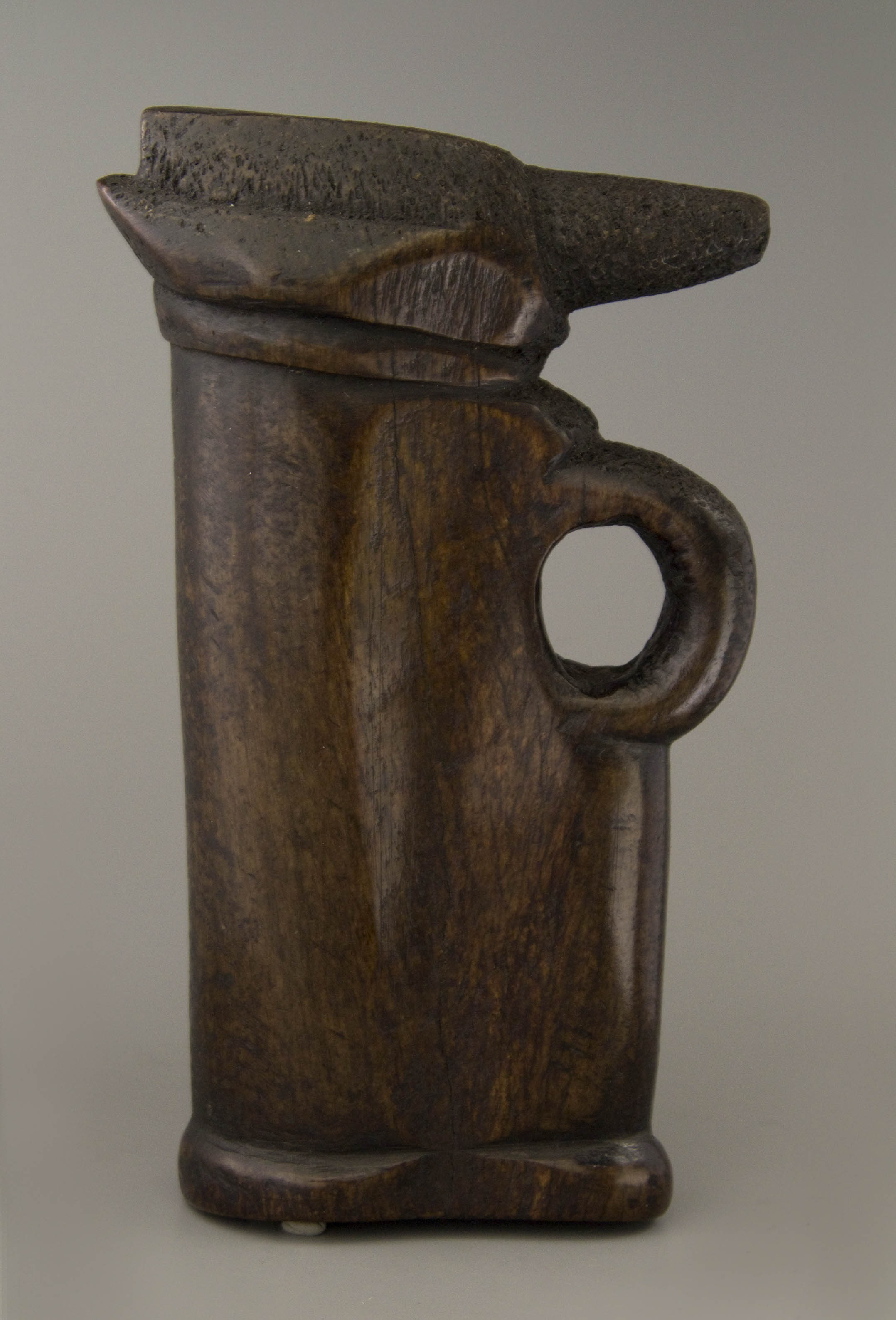
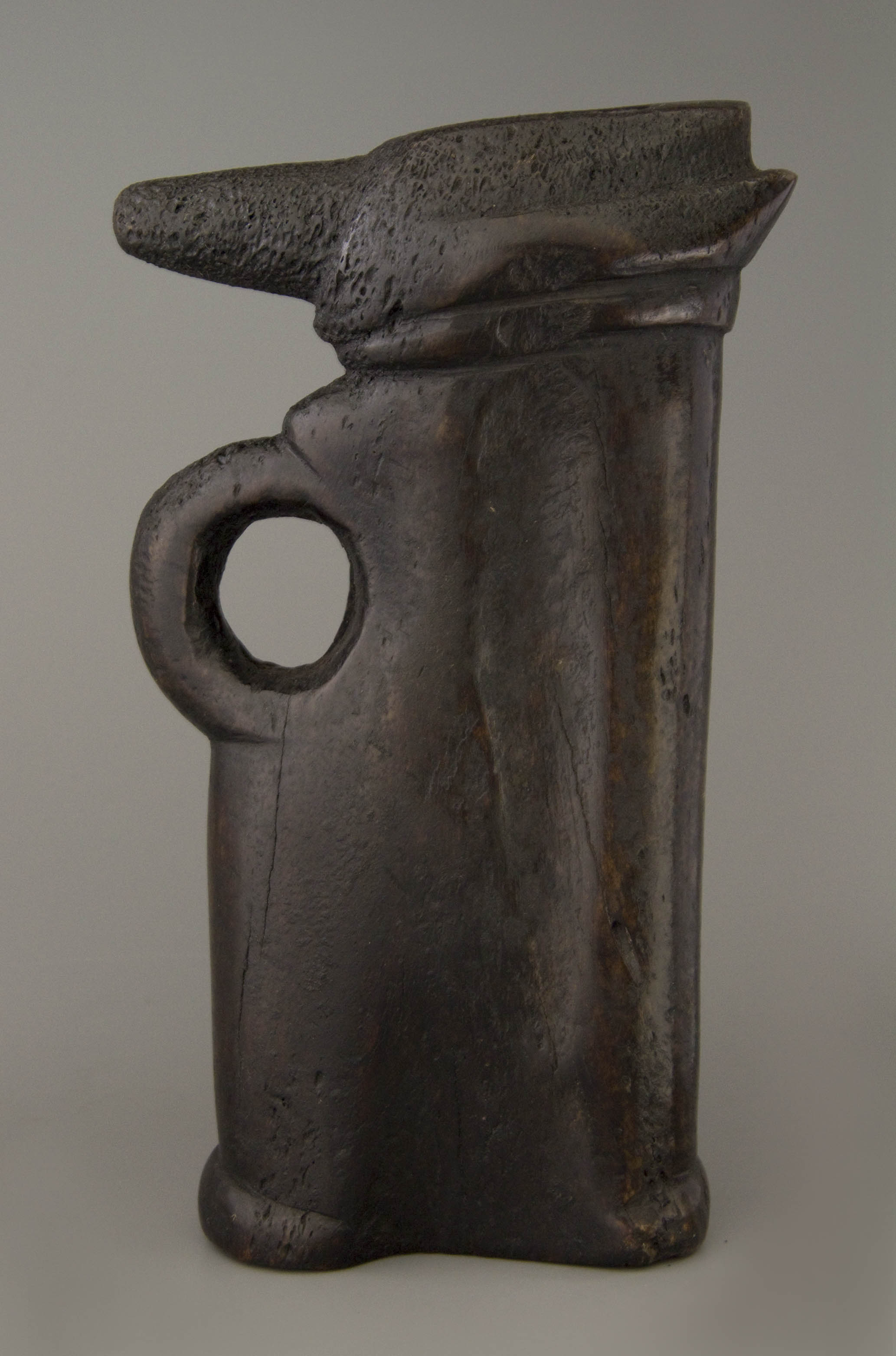
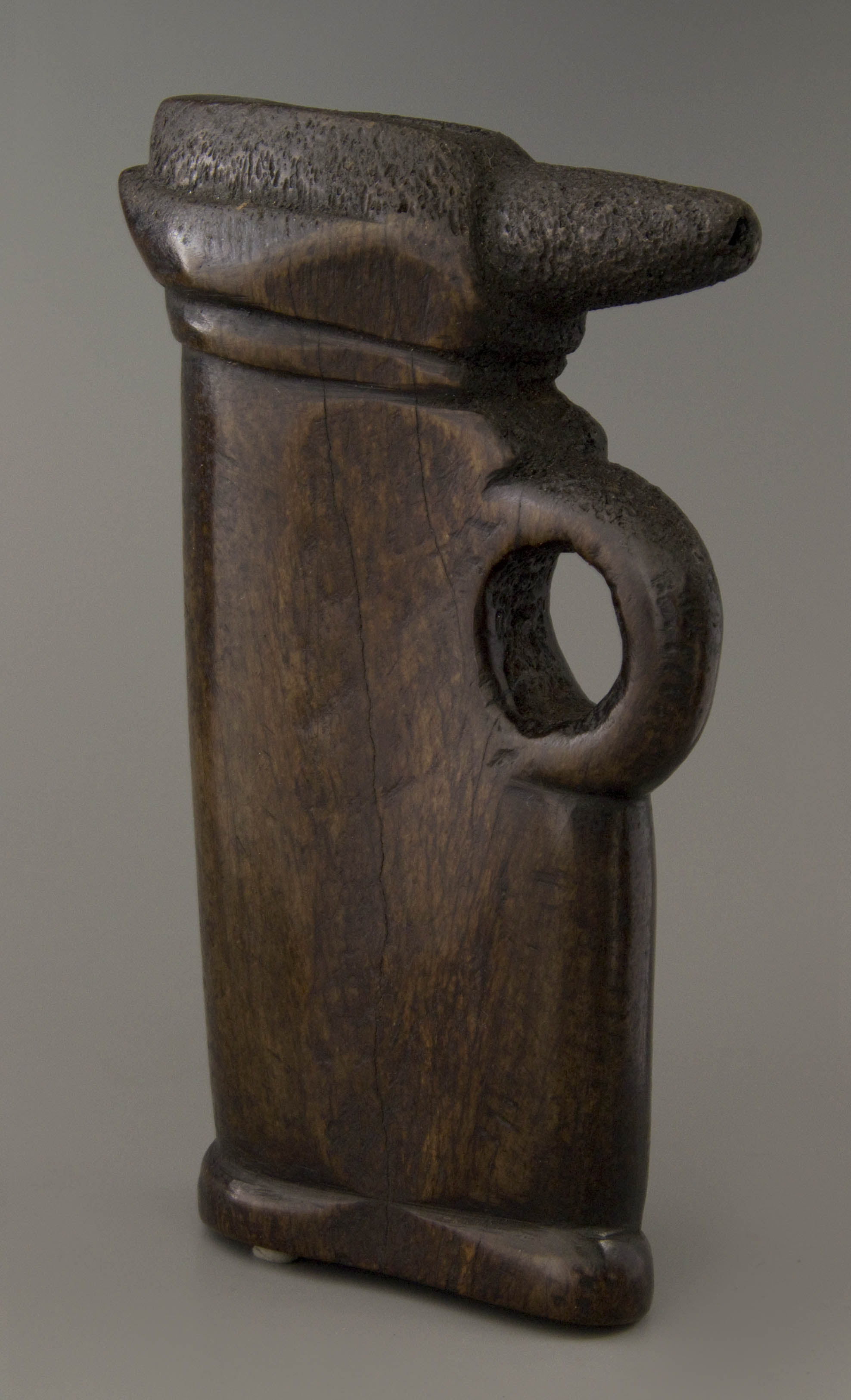
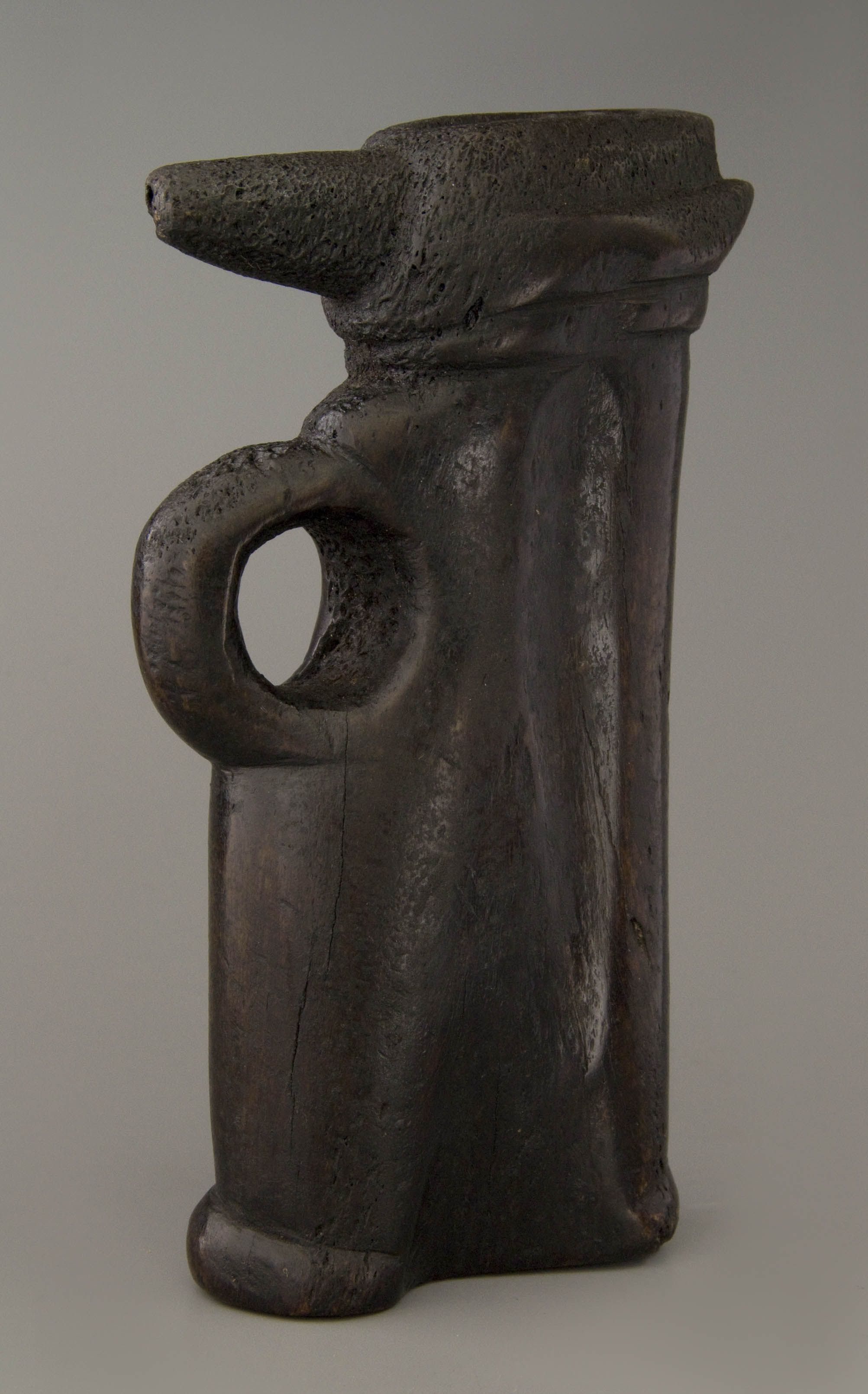
After sawing and filing, the pipes are coloured in the smoke from an open fire until they have a dark brown tint. By rubbing the objects endlessly with cow grease, a beautiful, shiny patina is created, which makes them stronger and, moreover, a lot heavier. It is precisely this post-treatment that provides the specific odour that hangs on the pipes, referring to the penetrating scent of the Maasai caused by goat and sheep urine mixed with body odours and greasy smoke. A fragrance that evokes for fanciers the atmosphere of primitive African housing.
Turle is rather shadowy about the use of the pipes. It is certain that the pipes have been in the possession of the laibon. This medicine man was an intermediary between the people and God and was mainly engaged in meditation. According to ancient traditions, he prepares medicines from different types of plants: roots, flowers, seeds, bark, leaves and fruit mixed with salt, ash and earth. The ingredients are grinded in a certain composition in order to be consumed in the pipes. That can be done in two ways. The most characteristic is by burning the powders in the pipe and then blowing out the smoke over the patient. More primitive is simply scattering by blowing the powders out of the pipe. In both cases the pipes are the medium, both smoked and blown out. The difference in smoke and blowpipes is in the size: the smoking pipe is larger than the blowpipe. The use belongs to both healing of diseases and religious rites.
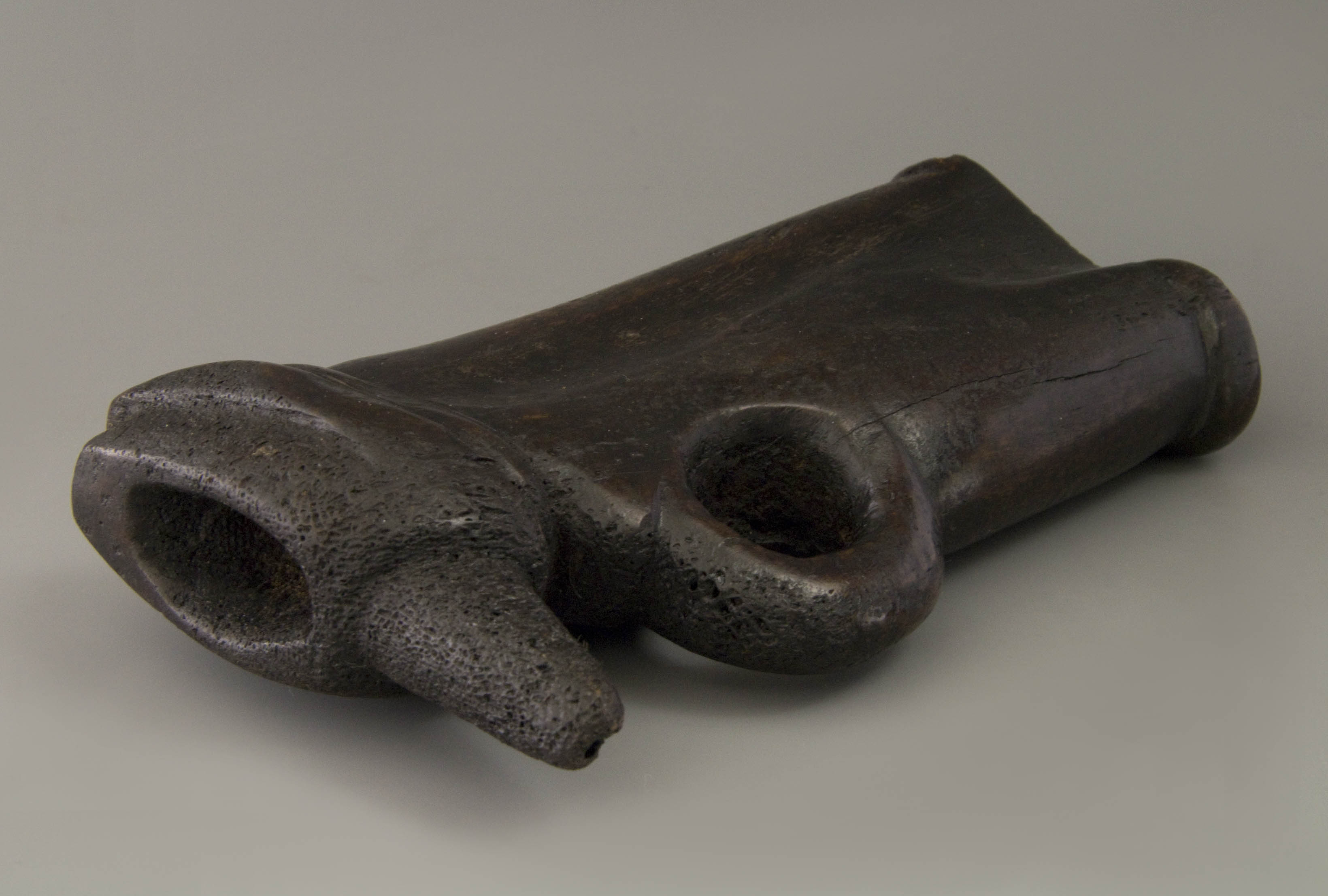
Critically considered, the functionality of the pipes raises doubts. In smoking these objects, the porosity of the bone will give an excess of false air. The medicines will therefore not burn properly. In addition, the bone is scorched with an unpleasant smell as a result. Even when blowing, the pipe is not technically pefect because the shape of the pipe is such that it ejects the powder partly in the face of the medicine man. And again, the material is counterproductive when blowing strongly, since the porous bone will take the respiratory strength. This lack of a logical use of either smoking or spraying indicates that we may not be dealing with serious utensils.
For myself, I became acquainted with these medicine pipes trough the ethnographic trade in Brussels at the beginning of the 1990s. The first specimens had a free design and were simply beautiful old, almost unprocessed bones that got a desirable appearance by years of sunshine and corrosion. Soon they made way for the compact pipes with the greasy surface and the characteristic penetrating hut smell. That specific fragrance should guarantee authenticity. In those years there was no reason to buy these pipes, especially because no trader could explain how they were used. The mentioned porosity of the bone material made the objects unsuitable as a smoking instrument. More importantly, fire traces that had to point out the use as a smoking pipe were always missing.
Recently, such a genuine medicine pipe was purchased for our collection. Since the first introduction to these pipes, Turle’s book was published in 1992 and the story of the laibon pipe had been established. In fact, the pipe had become a type in the history of the Maasai. This recent acquisition therefore fits seamlessly with the printed literature. Turle's book describes this prototype as a compact pipe with a flat bottom. The object was purchased in Brussels in 1987 for the serious price of 12,000 Belgian francs (Fig. 1). Thirty years later, in 2016 the auction price was significantly lower.
A second example of a so-called Maasai pipe had been added to our collection a few years earlier (Fig. 2). That pipe was purchased by a Dutch traveler at the Maasai in 1993, to be precise in Legnatron on the border of Tanzania with Kenya. That object is interesting for another reason. In the meantime the laibon pipe had become an established souvenir, but for the mass tourist the appearance of the pipe was changed drastically. The product was given a low-threshold simple design in a reduced size, so that the pipe could easily be carried in travel luggage or even in the handbag. In addition to simplifying the shape, patinating is also done less intensively. That fits perfectly with the tourist who likes to stay away from the pungent hut smell. The object shows how much the so-called tradition changed and became more civilized. Both purchases are a reason to reread Turle's book and to think about authenticity. A critical look should not be missing from any purchase, something that ultimately led to this article.
As early as the nineties, concerns arose about these objects in various respects. First, Turle's book remains rather obscure about the makers of these pipes. The objects are attributed to the Maasai but that is not logic for a nomadic tribe. It appears that the pipes are not made by the Maasai but by the Okiek or Ndorobo a neighbouring tribe that lives in the woods and does not practice livestock farming but beekeeping. It is precisely with this tribe that we see all sorts of crafts, often practiced in a far-reaching specialization, that would even involve pipe making. Turle qualifies these people as artisans or artists with a small letter a. We should conclude that the Okiek are the makers of the medicine pipes and the Maasai no more than the users. Unnoticed, the origin shifts to a different tribe which is in contradiction with the subject of the book.
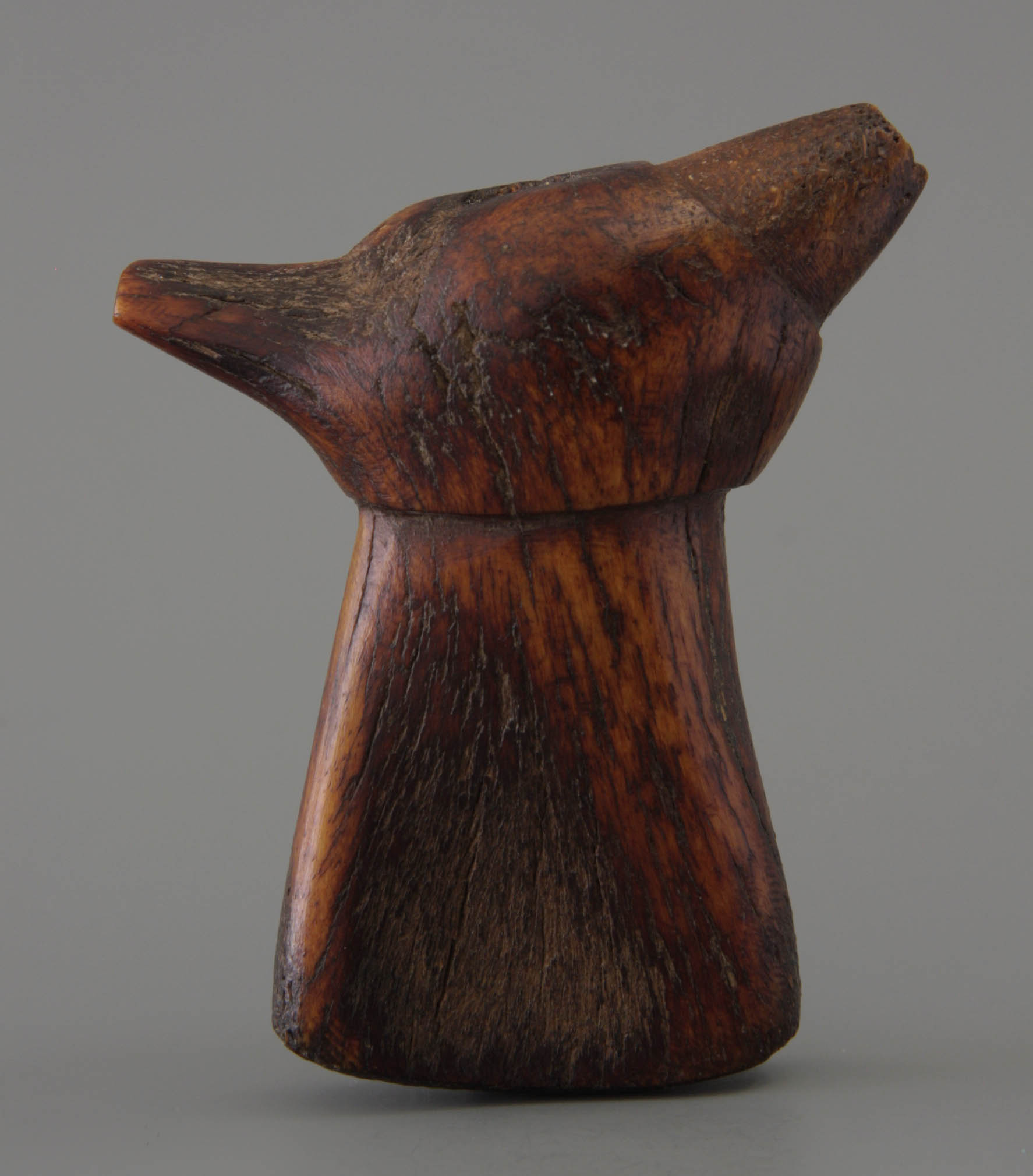

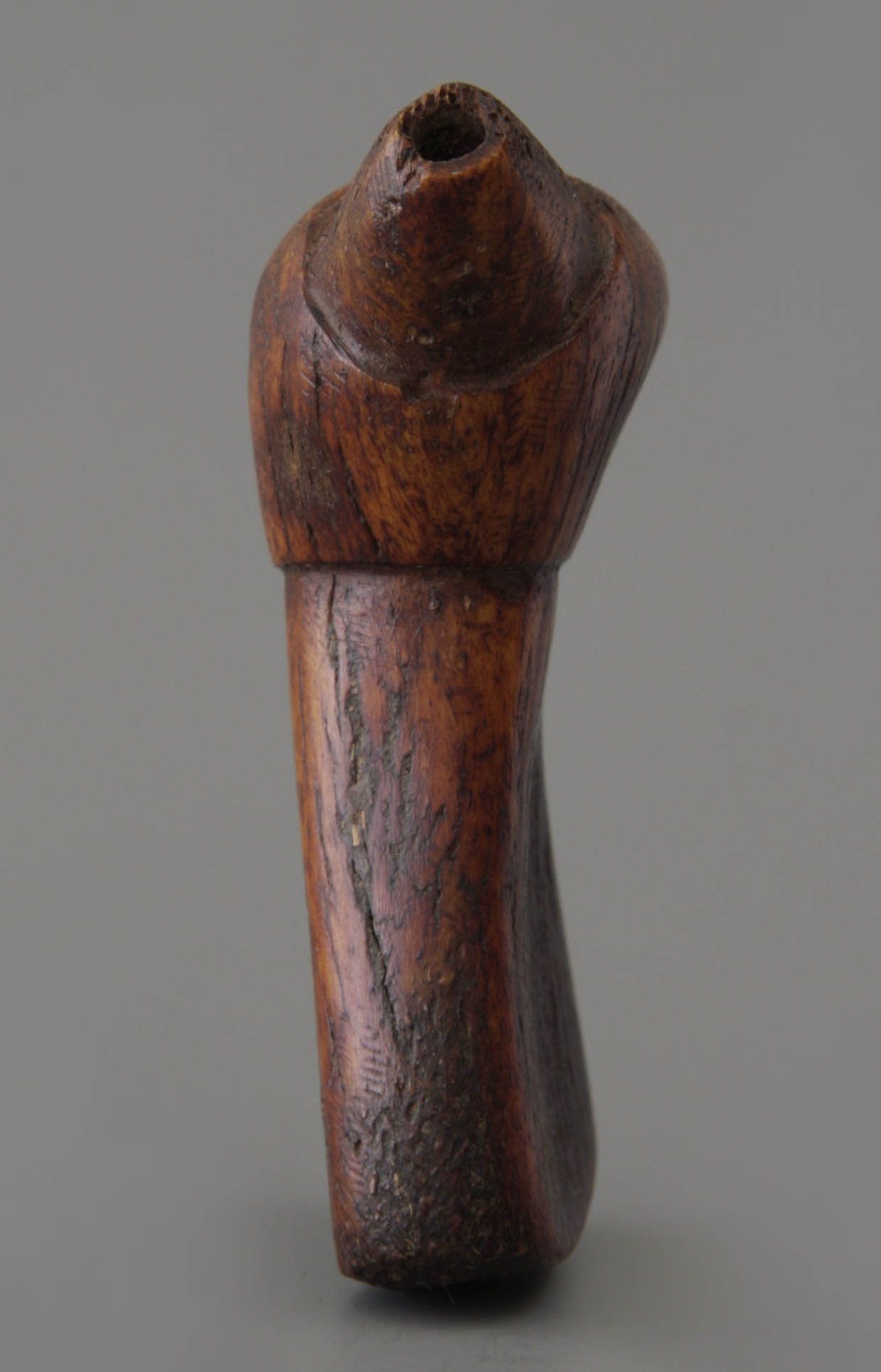
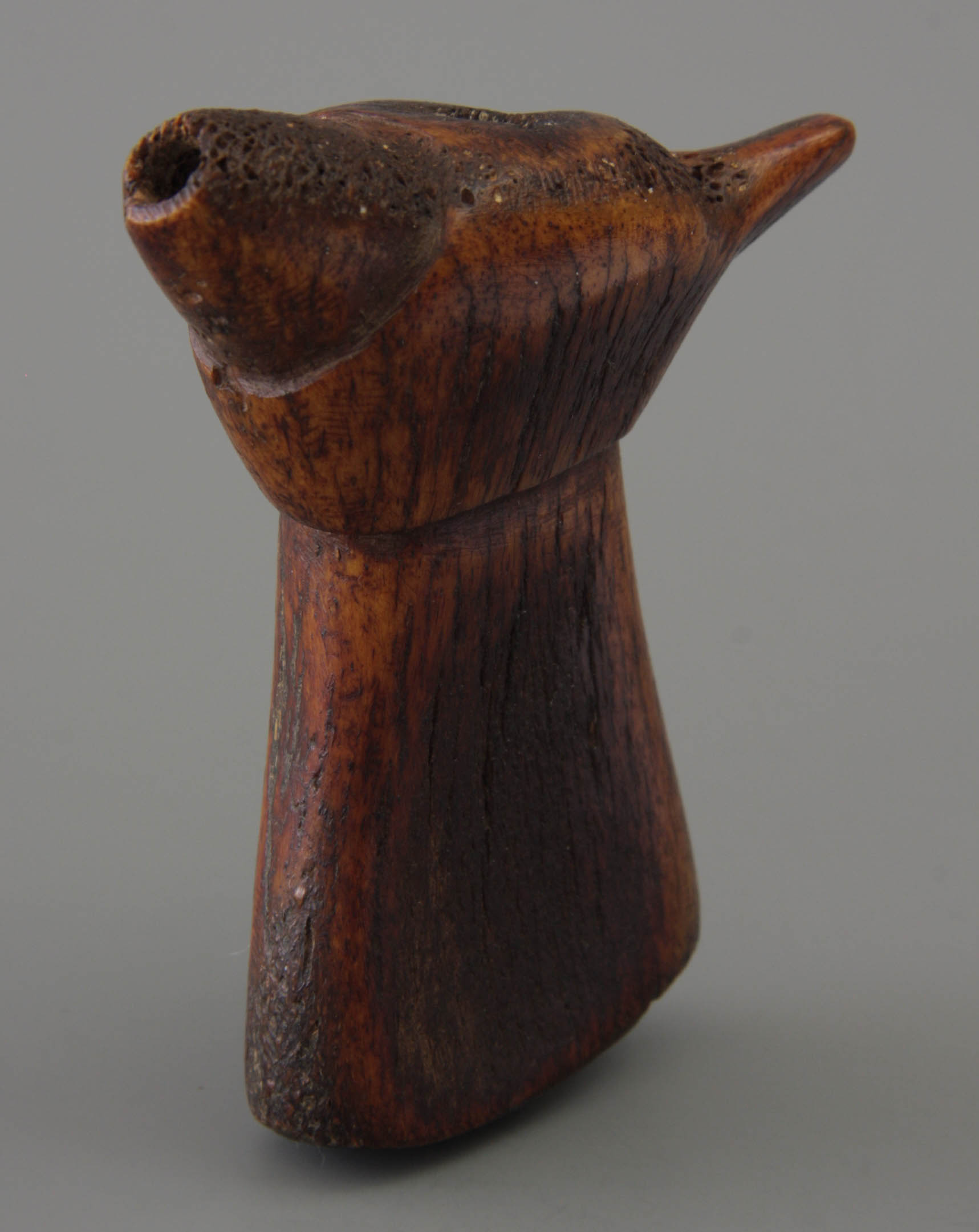
The fact that creator and user are not one and the same does not fit with the reported ancient use that the medicine pipes are never shown to other tribes. Oral tradition says that the rites take place in closed circles. As Turle says: “the pipes whisper secrets, they show the faces of God: looking, listening and watching”. No others that the doctors and priests use these instruments, only in the privacy of their own tribe. How can it than be that they are made by another tribe? They are certainly not shown to whites. In contrast to the pipe in Western cultures, where the pipe is an individual object that contributes to the status of the user, for the Maasai it is an object for spiritual communication during life. The general supply of these pipes at the Maasai as a souvenir object is therefore not in line with the social or sacred function and the hidden use
Well considered, the use of the medicine pipes is therefore shrouded in mystery especially since no westerner has ever seen these magic objects in use! In his book, the gallery owner repeatedly talks about his suppliers and then refers to the people who visited him to sell objects. The sellers were never the actual users, but always traders who gratefully accepted money for their merchandise, but did not reveal the tribal functions. Exciting is of course the passage where it is said that heirs of the laibons wanted to get rid of their precious family property for money or cattle, but there is no evidence how truthfulness such a story is. In any case, Turle did not go out into the field to have direct access to the source and even if he did, he saw people but didn’t do any purchases.
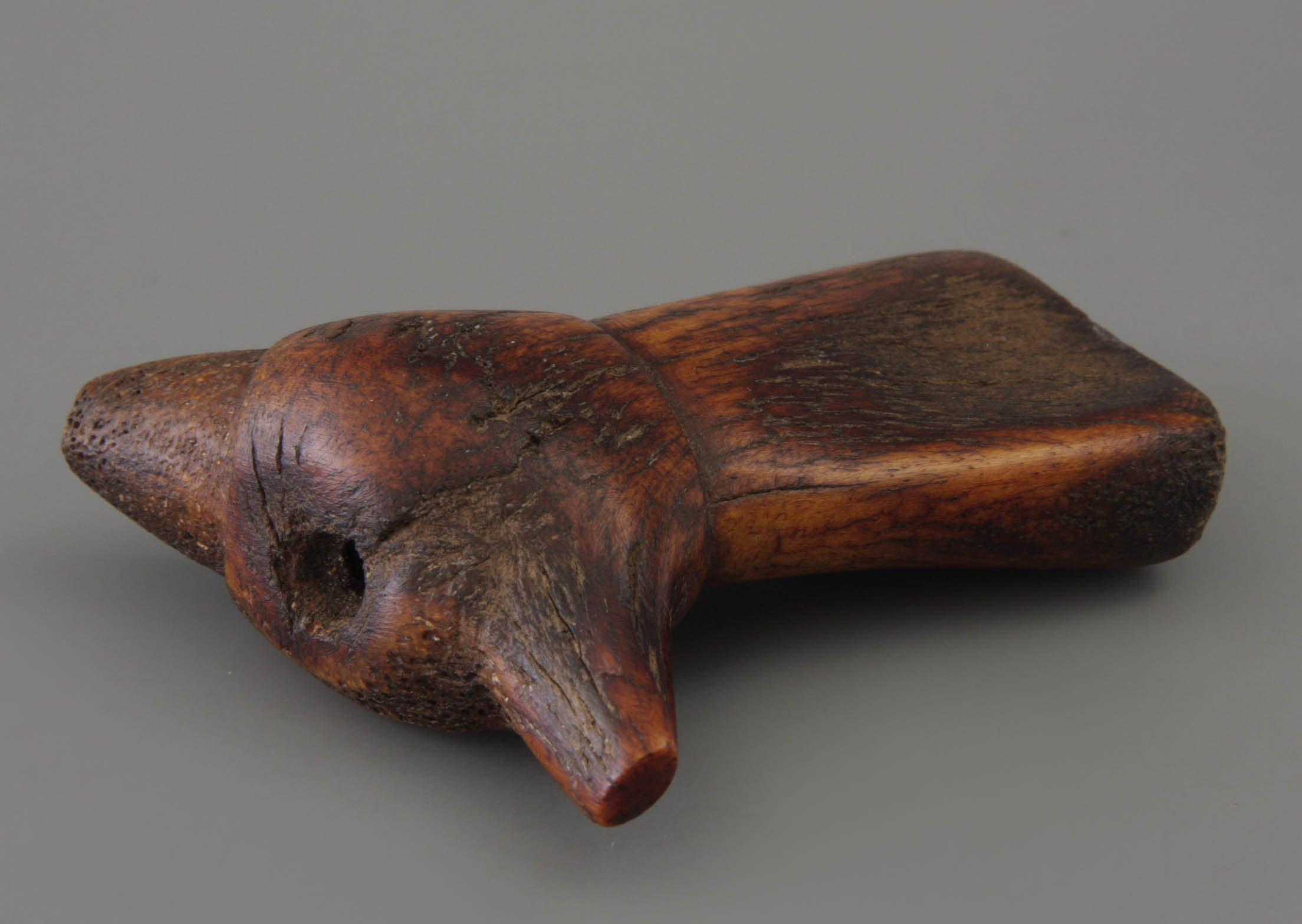
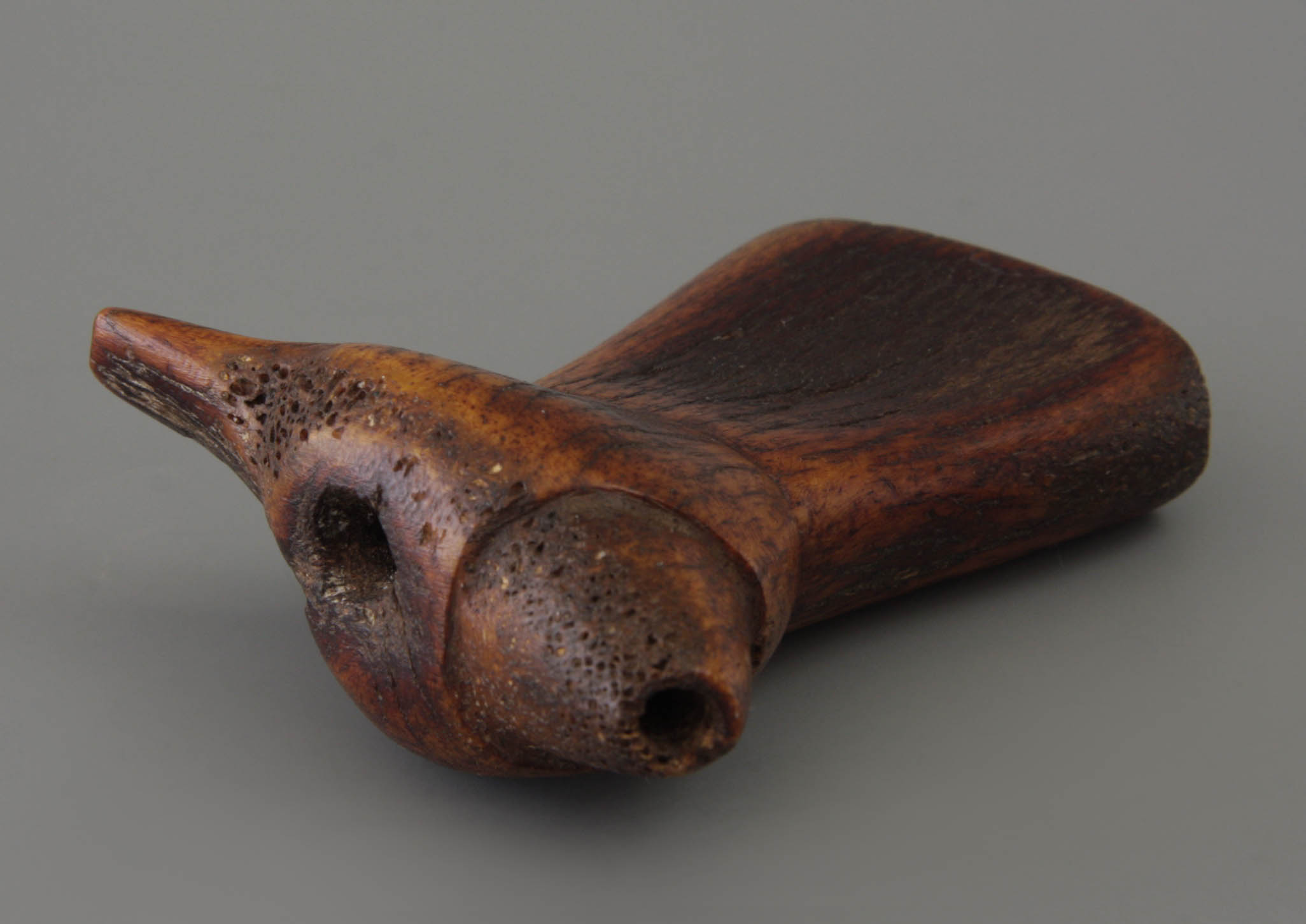
It is wise to search evidence of similar objects in the literature to have a proof of existence of the phenomenon of medicine pipe and to place this in a time perspective. Especially the pipe literature should be useful. Then it turns out that none of the famous collectors like Bragge (1880), Pritchett (1890) and Dunhill (1924) report Maasai pipes. The wonderful forms and the specific function would certainly be mentioned in their books. Even a scientist like Laufer (1930) does not mention the Maasai because of special pipes, nor the more recent and exhaustive standard work of Lecluse in which almost every African pipe of any tribe occurs. That the Maasai pipes have been used is doubtful but sources do certainly not go back before the year 1900. However, its physical form has never been published and is therefore still unknown. Nevertheless, it is reported that the Maasai know a common practice of tobacco chewing, for which small attractive tobacco containers are in use, adorned with colourful beads. The smoking pipe has apparently never become common in this culture, which is not unlikely for a nomadic tribe.
So it seems that the medicine pipes are so-called white art, meant to sell to the foreign tourist who, overwhelmed by a visit to the region and the colourful tribe, wants to take a souvenir. A smart local trade because there were enough animal bones to set up a tourist industry. To get an authentic look, patina on the brand new objects was required. The storage in the houses added the penetrating smell of the huts that kept the memory of the tourist alive. With the production of these pipes, the Maasai has exploited their marketing value ruthlessly. The mystical charisma of the laibon in conjunction with an original art object gave the culture of the Maasai an extra dimension. Thanks to Turle's book, that idea is optimally spread, on a worldwide scale. His attractive coffee-table-size book was published by a renowned publisher in large numbers and thus enriched the art of the Maasai with a new phenomenon: bone sculpture (Fig. 3).
Strangely enough, this tourist art has created a completely new international item of interest to collectors and the art market. The carefully crafted objects seem to fit into a primitive culture but are only meant to provide the African with an income for his maintenance. Soon these objects are to create a market of their own. They no longer serve as an extra income for the tribe, but especially the Western ethnographic trade yields interesting gains. You can speculate whether the gallery owner or author is taken by handy suppliers who came up with their own art form or, otherwise that the gallery owner himself was the inventor of these products. An intermediate form could of course have been that the gallery owner made grateful use of a local initiative. The subtitle of his book "300 Newly Discovered Objects and Works of Art" suggests that Turle initiated this trade himself. The beautiful photography through which the pipes are presented as an art form in the most mystical way, contributes greatly to the idea of a created myth.
The question remains why the Maasai has chosen pipes as a theme to make attractive souvenirs. Is it a coincidence that a little further south of this area the town of Arusha is known for the production of meerschaum pipes? In the 1970s this craft was practiced lucratively with the European as a customer. Unfortunately for the Maasai, their pipes did not last long. In the ethnographic world they were soon exposed. Apparently the story was too inconsistent and the object as a souvenir did not really appeal. The two semi-pipes now purchased by the Amsterdam Pipe Museum will be preserved as proof of this short-lived form of tourist art. They serve as an example and encouragement to also critically examine other ethnographic pipes of local and non-suspect. After all, our goal is to form a true picture of the global smoking culture.
© Don Duco, Amsterdam Pipe Museum – Amsterdam, the Netherlands, 2016.
Illustrations
1. Medicine pipe made of bone. Tanzania, Maasai, 1980-1987
Amsterdam Pipe Museum APM 22.368
- Souvenir medicine pipe in bone. Tanzania, Maasai, 1991-1993.
Amsterdam, Pijpenkabinet collections Pk 20.992 - Cover of Gillies Turle, The Art of the Maasai, New York, 1992
Amsterdam, Pijpenkabinet library
Notes
[1] Gillies Turle, The Art of the Maasai, 300 Newly Discovered Objects and Works of Art, Alfred A. Knopf, New York, 1992. (photographs of Peter Beard and Mark Greenberg).